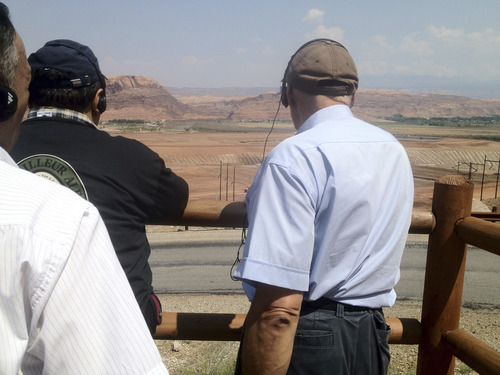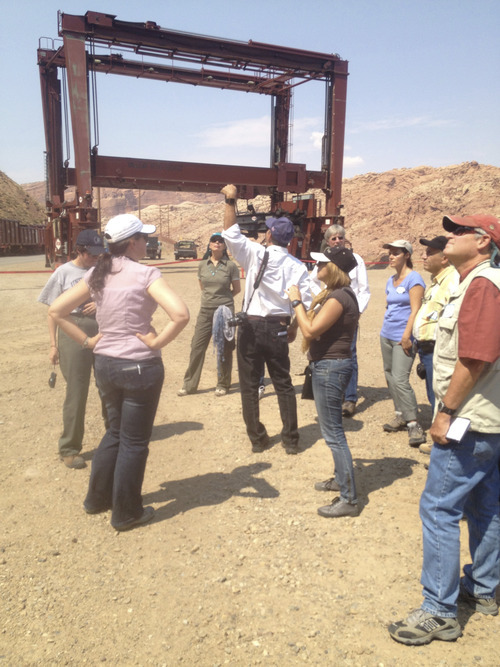This is an archived article that was published on sltrib.com in 2012, and information in the article may be outdated. It is provided only for personal research purposes and may not be reprinted.
Moab • Norwegian Malgorzata Sneve was among the throngs of foreign sightseers touring Utah's redrock country recently.
Only for her and the other foreign travelers in her group, the hot spots on their itinerary were, well, hot — nuclear facilities including a uranium mill and an assortment of radioactive cleanup sites left over from the Cold War and the uranium boom.
"It was great to come here to see practical applications [and how to] work with the community and to deal with radiation," said Sneve, a regulator who oversees cooperative programs at the Norwegian Radiation Protection Program and is part of a technology exchange group organized by the International Atomic Energy Agency (IAEA).
The 31 visitors represented 20 countries, all of them interested in finding better ways to manage their own radioactive wastes from mines and mills and other sites contaminated with materials left over from making bombs and electricity.
"The idea is to show people how we do remediation in the United States," said Russel Edge, a waste-safety specialist with the 165-member international organization, which co-sponsored the exchange with the U.S. Department of Energy. "Learning from each other is probably the most important part of the exchange."
The two-week tour and workshop included stops at the Mexican Hat Mill Site (cleaned up), the Monticello Mill Site (also cleaned up), the White Mesa Mill near Blanding and the Moab cleanup of the old Atlas Mill tailings (under way). Seeing those sites were radiation regulators from around the world, including France, Canada, Brazil Niger, Malawi, Kyrgyzstan, the Ukraine, Russia and Uzbekistan.
Edge, who worked on Utah and Colorado uranium cleanups before joining the IAEA in Vienna, said the tours would be especially helpful for nations that are building their waste-management programs. Seeing how it's been done in the United States will help the visitors find strategies and technologies for their own efforts.
On Wednesday, the group toured the cleanup of Charlie Steen's defunct uranium mill, a 16-million-ton heap of uranium-tainted waste that is being scooped away from the edge of the Colorado River, where it threatened to contaminate a drinking water supply relied on by more than 25 million people.
The foreign visitors took snapshots of the decontamination area, where dust and mud are hosed off the heavy equipment leaving the contaminated zone.
They watched heavy-duty cranes lift massive shipping containers onto the trucks that hauled the waste up the side of the mesa, where another big crane would load them onto rail cars that carry the waste 30 miles to a specially built disposal cell at Crescent Junction.
They were to visit the cell itself before heading to Grand Junction for more tours and workshops.
Don Metzler, who oversees the Energy Department's Moab cleanup, said he has taken part in technical exchanges like these since 1991. He's gleaned useful ideas and techniques from visits to Australia, Spain and Germany.
"So much of what we're doing in this project is something I saw done at another project internationally," he said.
Sneve noted that Norway has its own issues with radioactive waste but also offers expertise to neighboring countries struggling with Cold War legacy sites much like those in southern Utah.
"We have been working on similar problems in Russia for 17 years and in Central Asia for five years," she said.
fahys@sltrib.comTwitter: @judyfutah







